Disclosure: This post contains affiliate links for your convenience. Click here to read my full disclosure policy.
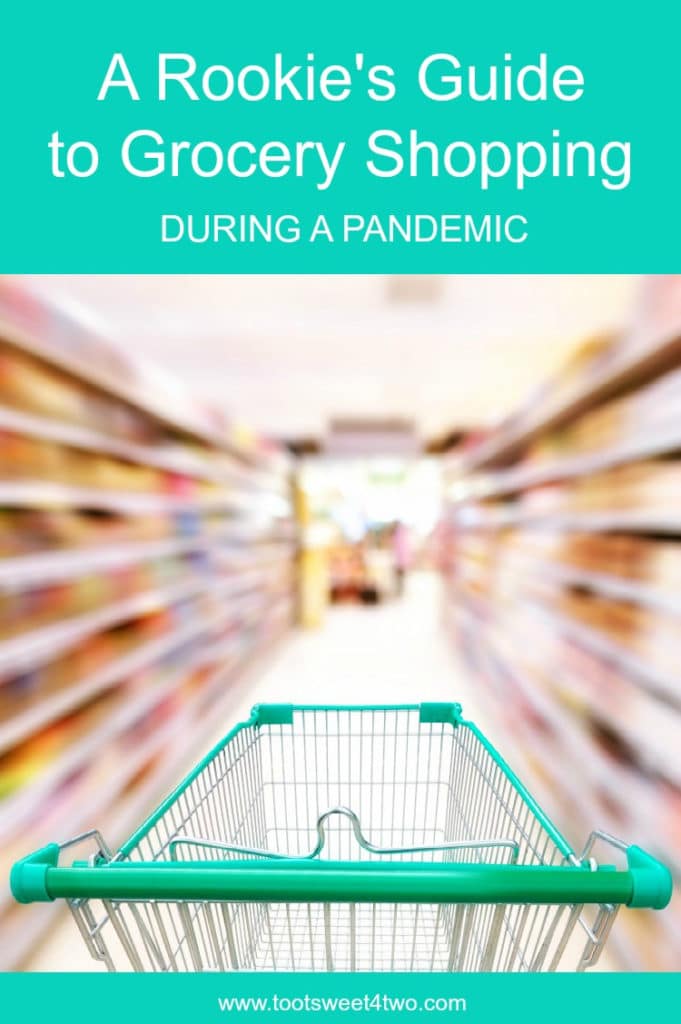
Okay. I’ll admit it. I’m scared to grocery shop. We are out of milk and dish soap, plus our fresh fruits and vegetables are running low. But, other than that, we still have enough groceries to last a few more weeks, so I don’t have to, yet, deal with my anxiety.
Do I believe my anxiety is overblown? No. Does everybody else think my anxiety is approaching irrational status? Maybe.
But, here’s the thing… if my husband gets the coronavirus, he will probably die. There. I’ve said it. He has severe pulmonary issues brought on by post-polio syndrome (he contracted polio as a child in 1952), and he has a condition called CO2 Retention. While we, “normal, healthy” people, expel CO2 in the natural course of breathing, he retains it. And, the other kicker is that the treatment for low oxygen is to give people more oxygen. But that isn’t an option for him because he retains CO2. So, I’m scared.

I’m scared that one day, out grocery shopping, I’ll come in contact with someone who is positive for COVID-19. And, unknowingly, I’ll bring the virus home with me. And, even though I’m doing everything I know how to do to avoid contracting it, I’m scared that I will get it anyway.
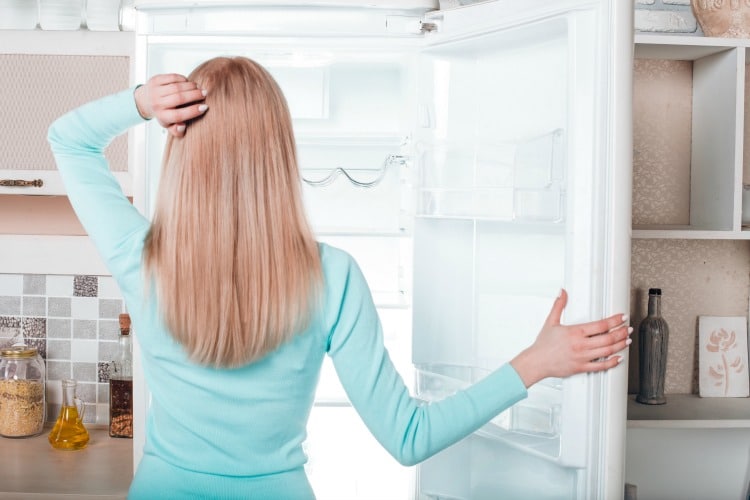
So, I’m not going grocery shopping until I no longer have a choice. I’m hopeful that by the time I do go grocery shopping, the experience will be less anxiety-ridden for me because the stores will have figured out a better way for us to intermingle.
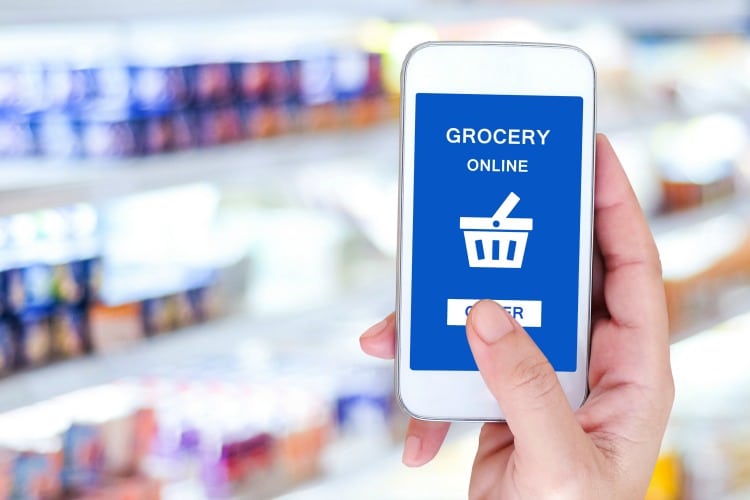
I know what you are thinking. You are thinking, why don’t I order groceries online for either delivery or pickup? Well, two days ago I tried that (remember? I said I was out of milk and running low on fresh stuff). I tried 4 different grocery stores online and none of them would let me finish the transactions. I even called one grocery store for help with my online order and the exasperated grocery employee who answered the phone told me to call a different store.
Just today, I received an email from my grocery store telling me to shop online using the link they provided. The link didn’t load – it just gyrated around trying to load. Finally, it loaded a sign that said: “We’ll be back soon! Sorry for the inconvenience but we’re performing some maintenance at the moment! We’ll be back online shortly!” Hopes dashed, I sank into a bit of a slump.
Here’s a “tip” to the grocery stores – don’t send emails to your customers telling them to order online until you iron out the bugs! Hours wasted and nothing gained. Maybe in a few more weeks they’ll have online ordering worked out.
So, instead of ordering online, I’m gathering information via various online resources. Lots of information, some in agreement, some not and more controversial. I’ve created “A Rookie’s Guide to Grocery Shopping in a Pandemic” as a printable checklist (click to download) so that you and I can print several and keep them handy for upcoming grocery shopping expeditions. Because grocery shopping has become an expedition, hasn’t it?
Anyway, this is what I’ve learned…
BEFORE YOU LEAVE FOR THE GROCERY STORE
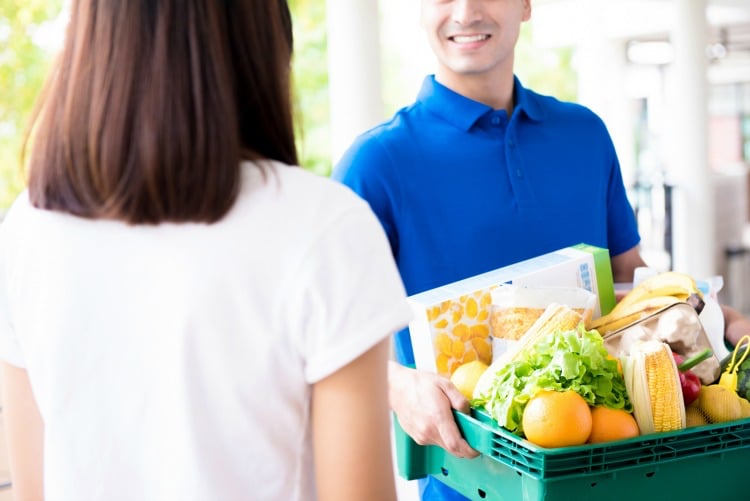
If you can order online for pickup service, do that. It’s not working well in my area yet, but if and when this is worked out, this is probably the best alternative than actually entering the store. And, consider non-contact delivery if that’s available in your area, whether the store’s delivery service or another delivery service. As I write this, I’ve been unable to order online for pickup or for non-contact delivery because all the slots are full, or the websites are not working or are down. Hopefully, this will change soon as these services ramp up their offerings.
Try to limit your “in-store” grocery shopping trips. If you can limit it to every two weeks instead of going weekly, that’s even better.
Don’t shop during peak hours. So, plan your grocery shopping trip for earlier in the morning or later in the evening. And, don’t shop during the first three days of every month; leave those days open for WIC (Women, Infants, and Children) program recipients who only get a monthly payment.
Make a meal plan for two weeks using the groceries that you have on hand. Use this FREE printable, purposefully made in black and white to save ink. Add things that you need to supplement your meal plan, i.e., milk, fresh fruit and veggies, bread, etc. Sticking to your meal plan will make grocery shopping faster, and you won’t be tempted to linger around the grocery store looking at new products.
Write your grocery shopping list on a piece of paper. Don’t put it in the “Notes” section of your cell phone. In fact, don’t take your cell phone into the market (unless you use your phone to pay for things). Leave it in your car. If you are familiar with the layout of your grocery store, group the items you need into categories. For example, make a “Produce” category and put your bananas, tomatoes, etc. under that category. Make a “Dairy” category and put your milk, cheese, yogurt, etc. under that category. Etc. This will make your shopping trip faster because you won’t be backtracking through the grocery store. Here’s a one-page printable Grocery List that I created just for readers. Use this FREE Printable Grocery List, if you’d like. Or, if you’d rather have one that’s more “freeform” without categories, use this one.
Don’t pay for your groceries with cash. If you do pay with cash, you’ll get change back from your purchase. And, per my financial advisor, cash is full of germs. So, choose a debit or credit card and take that with you. If you are a woman, plan on leaving your purse at home or in the car, so you might want to “scale down” what you take when you walk out the door, i.e., leave your purse at home and put your driver’s license and credit card in a small wallet that fits in your pocket.
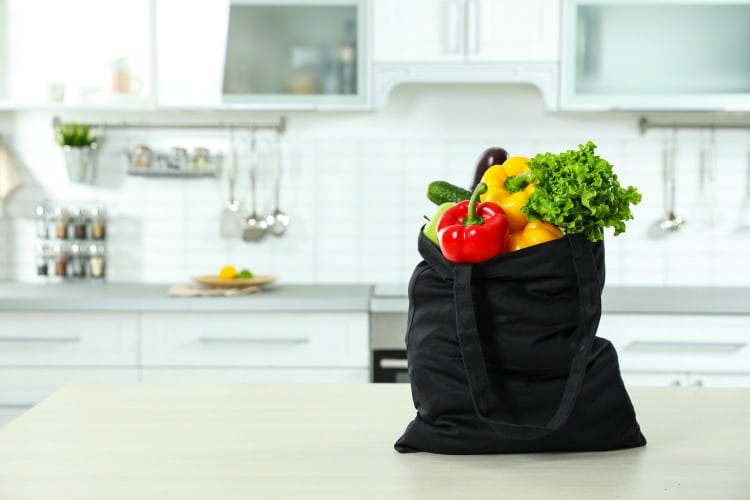
Decide on the type of grocery bag you will use. If you have canvas or cloth grocery bags of your own that can be washed in the washing machine, take those with you. You will need to wash them every single time you use them from now on, so get used to that. However, if you bring your own grocery bags, you may be required to bag your own groceries because I’ve heard of grocery stores refusing to touch customers’ bags. And, note in the future that you may not be able to bring your own bags. More and more States may decide to ban the use of reusable bags of all types, meaning you’ll have no choice but to accept the bags offered by the grocery store.
Clean out your trunk. If you have anything in the trunk of your car, take it out. Reserve the trunk of your car for groceries only. Do not put groceries in the seat of your car… not in the front seat and not in the back seat.
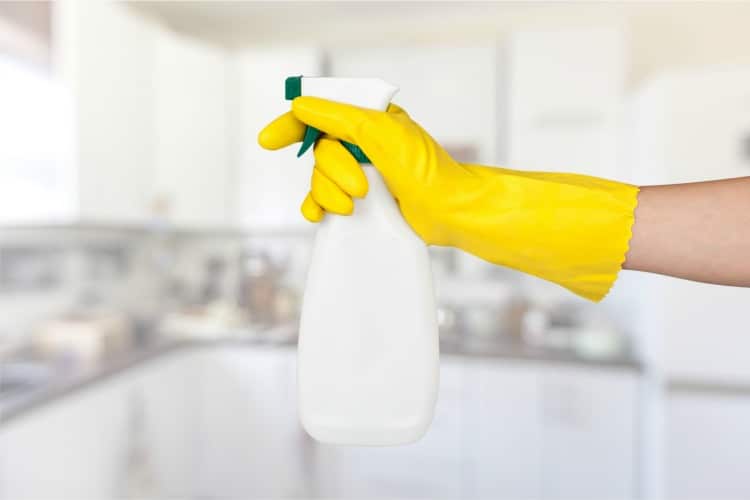
Clean your kitchen counter with disinfecting spray. Create two zones. Designate one side of your kitchen counter as “clean” and the other side as “dirty.” This will save you time when you come home from the grocery store, so do it ahead of time.
Place a change of clothing and shoes either in your garage, or inside the entrance to your home. You will want to change your clothes and shoes right away upon your return from the store. If possible, wear shoes like tennis shoes that you can wash in your washing machine.
If you have long hair, tie it back. Put it in a ponytail or a bun. That way, your hair doesn’t “skim” the surfaces of stuff.
Bring your own disinfecting wipes. If you don’t have a small, portable package of wipes that will fit in your pocket, put a small supply of wipes into a sandwich bag and put them in your pocket.
Bring your own hand sanitizer, if you have it.
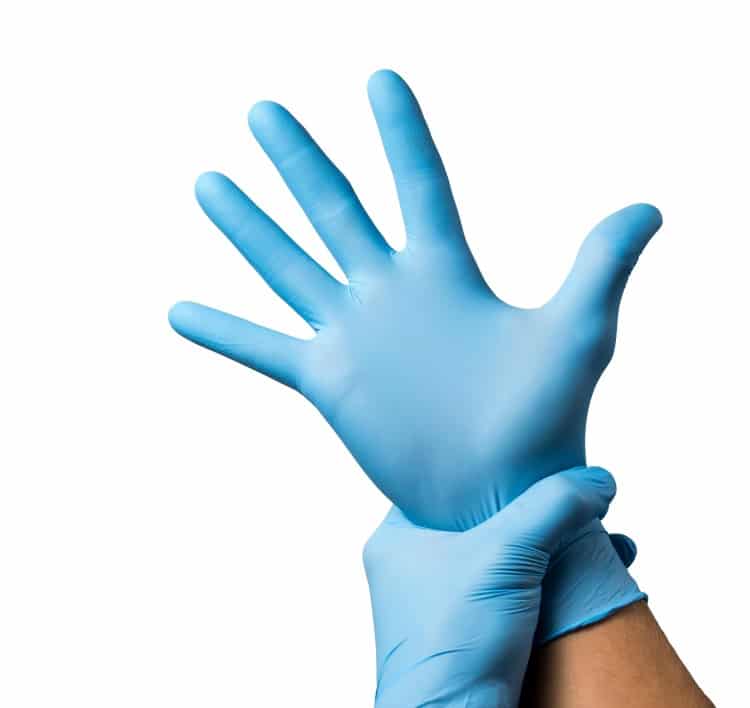
Put a pair of disposable gloves in your pocket. If you don’t have any, get disposable bags from the produce aisle of the grocery store when you arrive and use those.
If you have safety glasses, bring those on your shopping trip.
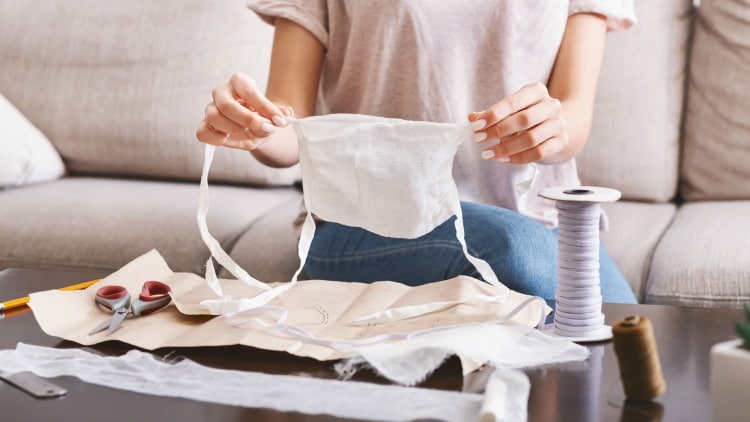
If you have a non-medical face mask, put that in your pocket, too. If you don’t have a face mask, I’ve rounded up a few articles to help you make your own: Joann’s, Good Housekeeping, Instructables, New York Times.
JOANN: Making Face Maks (Instructions, CDC Recommendations, etc.)
New York Times: How to Sew a Face Mask
Good Housekeeping: How to Make Face Masks for Yourself and Hospitals
Instructables: DIY Cloth Face Mask
If you don’t have a sewing machine, sewing skills, tools, or supplies, use a bandana or scarf or ask a friend or neighbor with sewing skills to make you one (thank you, Kathy). And, here’s a “no-sew” version that seems doable: Simple No-Sew DIY Mask.
FYI – Joann’s site is recruiting volunteers to make masks for medical personnel. If you have the equipment and time to participate, they will send you the supplies.
Bring a small brown paper bag, like a lunch bag. You will use this to place your mask in once you are finished shopping. Leave it in the car; do not take this bag into the grocery store with you.

NOTE: it is recommended that disposable face masks not be reused (thus, labeling them “disposable”); they should be reserved for medical professionals. However, due to the current shortage of masks, if you have disposable masks, to reuse them, you should have three disposable masks that should be rotated daily and when not in use, stored in a brown paper lunch bag. This article explains it well: Can You Reuse a Face Mask?
Plan to go alone. Don’t take anyone else with you. Leave your family at home; grocery shopping is no longer a fun, family outing.

Thoroughly wash your hands before you walk out the door.
WHEN YOU ARRIVE AT THE GROCERY STORE
If the store appears to be crowded, or a long line has formed outdoors, turn around and go home or check another store. Come back later in the day or another day during off-peak hours.
If you are staying, park as far away from the store’s entrance as you can manage. This is to help you keep the six-foot social distancing recommendation. In fact, if you can park where you don’t have any other car on either side of your car to avoid inadvertent contact with strangers, that’s even better.
Once you get out of the car, put on your gloves and homemade mask. If you don’t have gloves, use hand sanitizer often while grocery shopping. If you don’t have a mask, throw on a bandana or scarf.
Make sure your debit or credit card is in your pocket and put your car keys in your other pocket. Make sure your sandwich bag full of wipes is in your pocket, too, as well as your mini bottle of hand sanitizer.
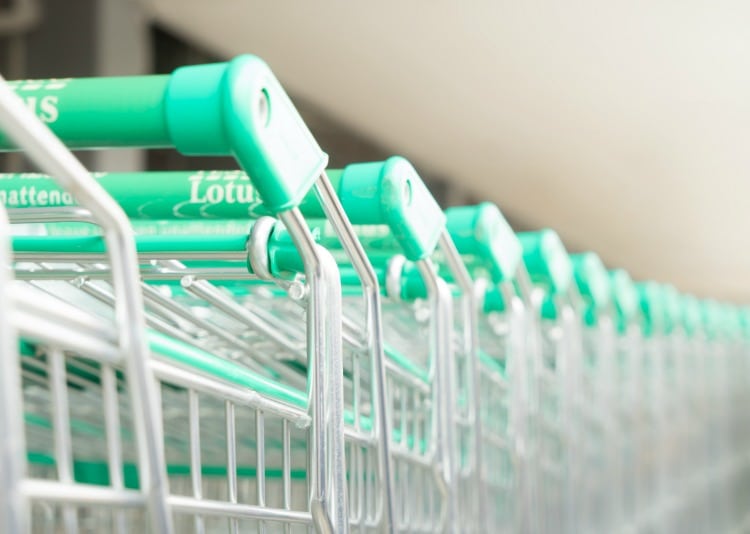
Take one of the wipes out of your sandwich bag and have it ready. Choose a cart and wipe down the handles with the disinfecting wipe (even though you have gloves on!). Attempt NOT to touch the grocery cart’s handle with your gloved hands until you’ve wiped the handle down. And, if you don’t have gloves, be sure to use your hand sanitizer after you’ve wiped down the handle with your disinfecting wipe.
SHOPPING INSIDE THE GROCERY STORE
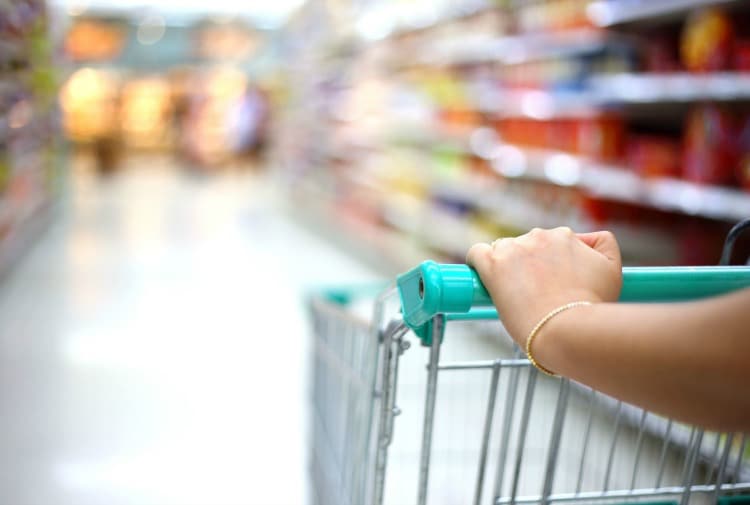
Keep the 6-foot social distancing recommendation in the forefront of your mind. Avoid people as much as possible, and don’t make physical contact with them. If you see a friend in the grocery store that you haven’t seen in awhile, resist the urge to run up and hug them, but wave instead from a 6-foot distance. Some grocery stores have implemented a “one-way” direction down their aisles. If that has been put into action in your store, abide by their “one-way” directive.
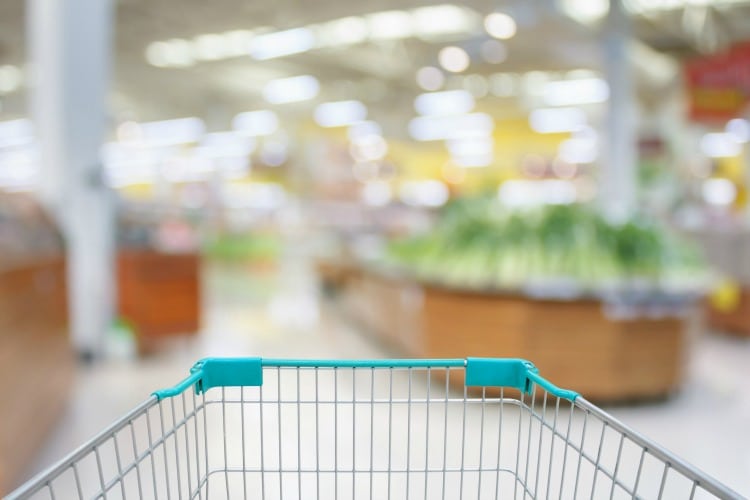
If you don’t have any disposable gloves, get disposable bags from the produce aisle of the grocery store when you arrive and use those while in the store.
Don’t pick up fruit and vegetables to sniff or squeeze them. Once you pick up a fruit or a vegetable, commit to it and put it in a disposable plastic bag available in the produce section, then in your cart and move on.
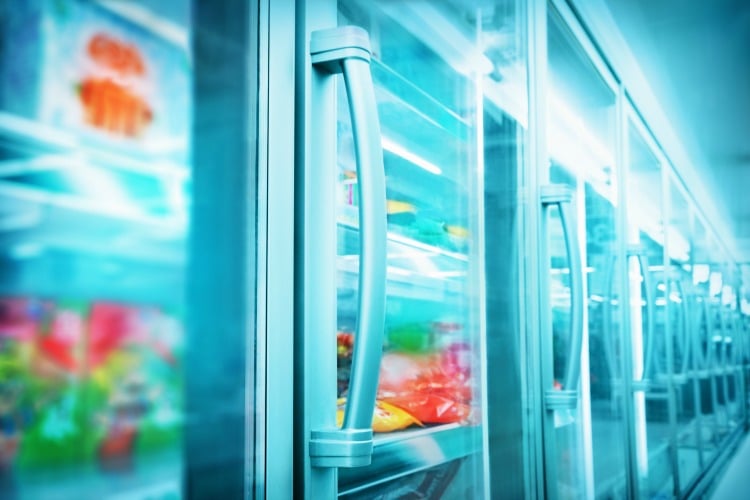
Depending on the size of your freezer, you may want to keep frozen food purchases to a minimum. Concentrate on items you usually eat and round out your choices with frozen vegetables and fruit in case you run out of fresh before your next shopping trip.
Respect the maximum limits on certain products imposed by your grocery store.
HOW TO MANAGE THE CHECKOUT LINE
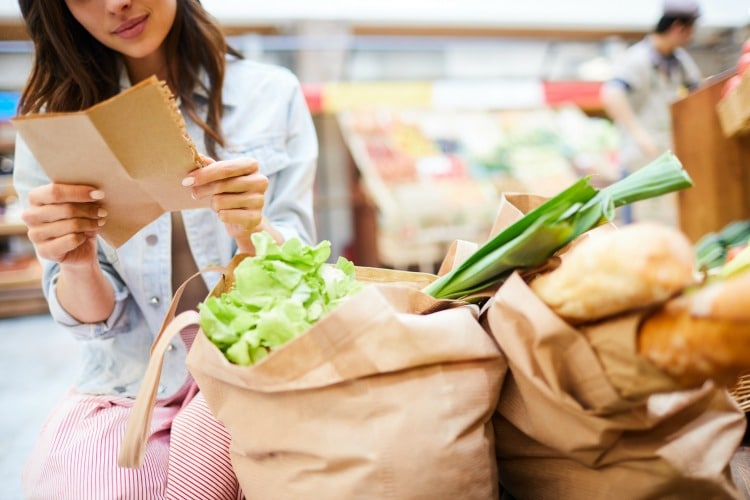
Review your shopping list before you get in the checkout line to make sure you got everything on your list. You don’t want to go back into the store once you’ve checked out!
Use the self-checkout, if you can. You will need to wipe down the self-checkout station with one of the disinfecting wipes you brought with you before you start the self-checkout process.
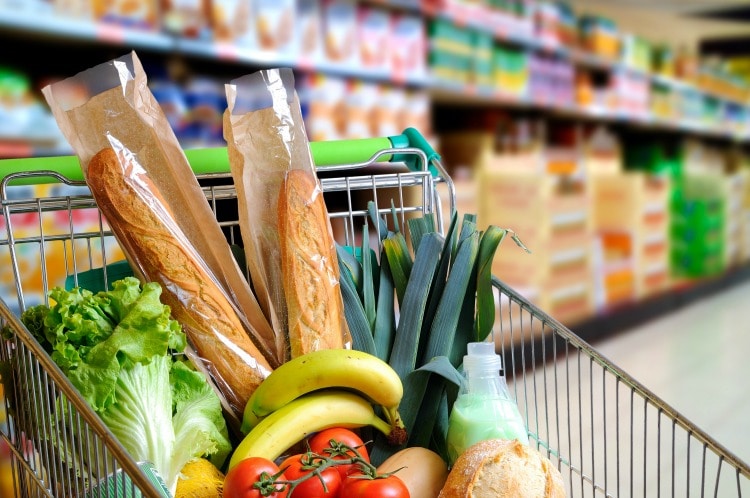
As you bag your groceries, try to group your items together in like categories. This will make unloading and unpacking your groceries easier when you get home. For example, break down your bags like this:
Pack fresh fruits and vegetables in one or two bags.
Group fresh meat, chicken, and seafood in another bag.
Put your frozen things is yet another bag.
Load your bakery goods in another bag (bread, rolls, pastries, etc.).
Bundle your boxed food into another bag (cereals, pasta, and such).
Place your cleaning supplies in another bag.
Box up your paper products in yet another bag (paper towels, toilet paper, napkins, and the like).
And, finally, add your personal products in another.
If at all possible, don’t use cash. Use a debit or credit card that you can wipe with a disinfecting wipe after each use.
WHAT TO DO WHEN YOU’VE LEFT THE GROCERY STORE
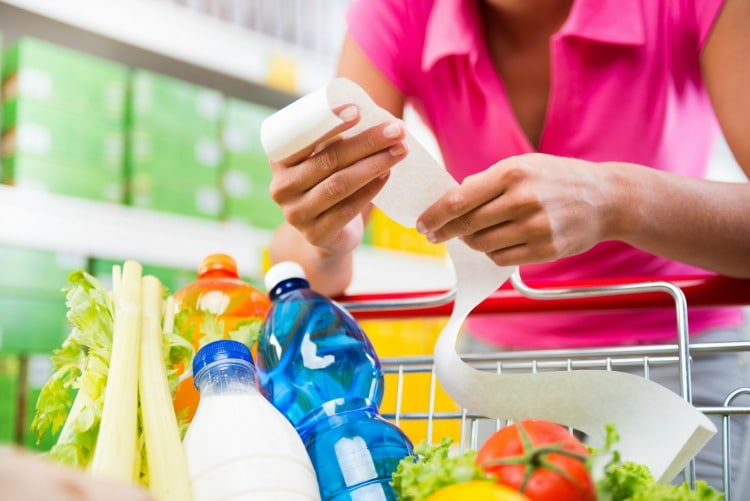
Don’t keep your receipt or your shopping list. Rip up the receipt and throw both away in the grocery store’s trash can usually located right outside the grocery store’s door.
Take off your gloves and discard them, too, in the outdoor trash can of the grocery store.
Walk to your car, maintaining the 6-foot social distancing directive.
Load your groceries into the trunk. Again, do not put your groceries in the front seat or back seat of your car.
When you get in the car, remove your mask, and put it in the brown paper bag that you brought with you. And, remove your safety glasses.
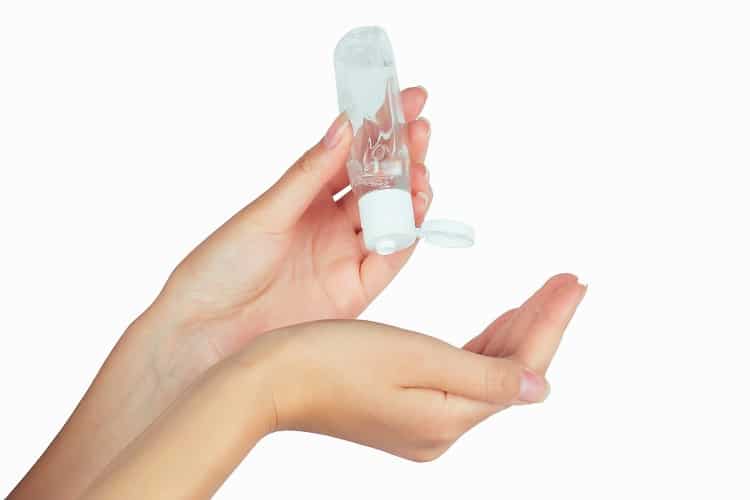
When you get into your car, get out your hand sanitizer and use it.
Wipe down your credit or debit card with a disinfecting wipe before you put in back in your purse or wallet.
WHAT TO DO WHEN YOU ARRIVE HOME
While many, including experts, feel that washing your food and packages are “overkill,” here are a few facts:
Fact: Coronavirus lives on cardboard for as long as 24 hours.
Fact: Coronavirus lives on plastic for up to 3 days.
Knowing these facts can help you decide what your tolerance level is for any efforts you make to protect your family by cleaning, disinfecting, and sanitizing food and products brought into your home from your grocery shopping trip.
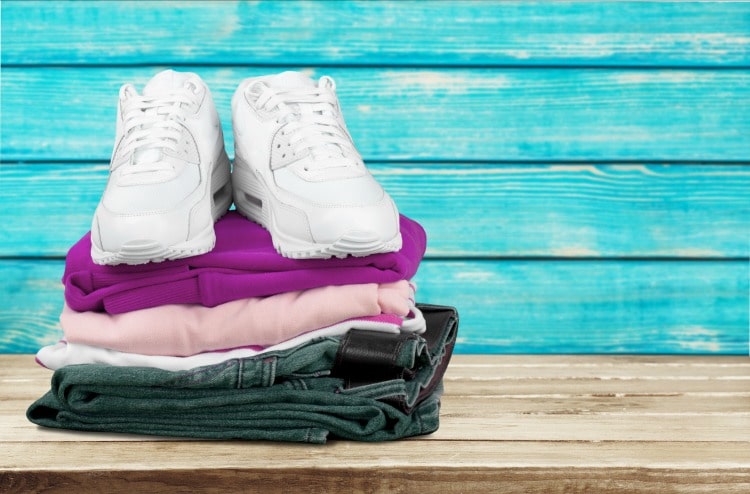
After you get out of your car, change your clothes and shoes using the fresh change of clothing that you left near your door. Put all your dirty clothing immediately in your washing machine and start a load. Bring in your mask in the brown paper bag. If homemade, throw it in the wash, too.
Open your trunk and find the bag with the frozen goods. Take that into your home and place it on the part of the counter that you have designated as “dirty.” Remove the frozen items from the bag and place the boxes and bags on the “dirty” section of the countertop. Throw away the grocery bag (unless it’s yours, then throw it in the wash). Wash your hands. Use a disinfecting wipe to wipe down the frozen boxes and bags and put this food into your freezer.
Next, go out to your car and remove the dairy products from the trunk. Repeat the process: carry the bag into the house, unload on the “dirty” side, then wash your hands. Next, either wipe items with a disinfecting wipe OR clean with soap and water in the sink (if the packaging allows for it). As you work on cleaning your items, put those items on the “clean” side of the countertop, and once all are clean and dry, put them away in your refrigerator.
Go back out to the car and pick the next bag of groceries. If you have fresh meat, it should be together in one grocery bag. Follow the same procedure as above, if the packaging allows for it. If not, wash your hands and get out a couple of dinner plates (one for each type of meat) and put them on the “clean” side of the countertop. Remove the meat from its packaging and place it on the clean dinner plate. Discard the grocery store packaging and the grocery bag. Wash your hands. Place each different type of meat in a separate food-safe plastic storage bag or container and place it in the refrigerator or freezer. Be sure to label it if putting in the freezer so that you don’t have to try and figure out what the “mystery meat” is later.
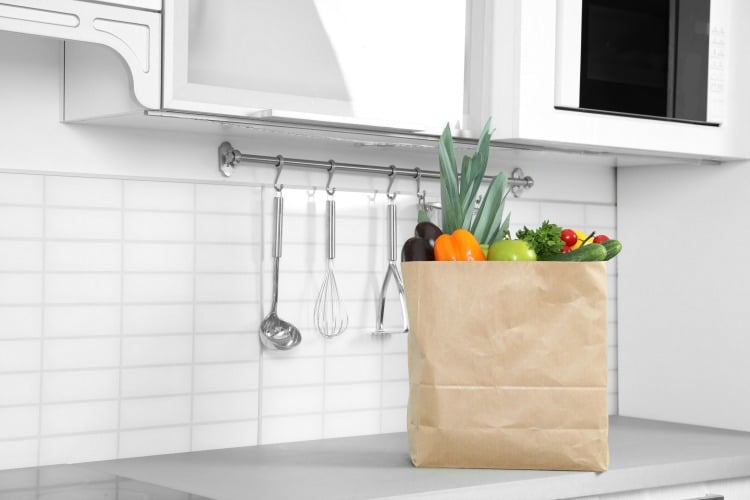
Up next: the fresh produce. Again, go to the trunk of your car and bring in the bags of fresh fruit and vegetables. Place grocery bags on the “dirty” side of the counter and wash your hands. Repeat the process: wash your produce (with water only) and place it on the “clean” side. Once finished washing and drying, set your now-clean produce in the refrigerator.
Now that the fresh and frozen food is handled, move onto the packaged food. Find those bags in your trunk and bring them into the house and place them on the “dirty” side. If they are in boxes that have bags inside, like cereal boxes, remove the bags from inside the box, place them on the “clean” side, and throw the box away. Wash your hands. If you don’t think you’ll remember what the item inside the bag is, make a little tag with paper (like a “sticky” note) and tape it to the bag before putting away in your pantry. If the box included instructions on how to prepare the item, like pasta for example, take a photo of the instructions on your cell phone before throwing the box away. If you can store these dry goods in other containers, for example plastic or glass pantry storage containers, do that.
Continue cleaning your groceries bag by bag until all your products have been removed from the trunk, wiped down or washed, and put away.
One last thing: after all grocery items have been cleaned and put away, wash your hands. Then, clean both sides of your countertop with disinfecting spray. Then, rewash your hands. Your hands can never be too clean. If you feel the need (based on your exposure inside the grocery store), go take a shower and put on fresh clothing again.
NEIGHBOR HELPING NEIGHBOR
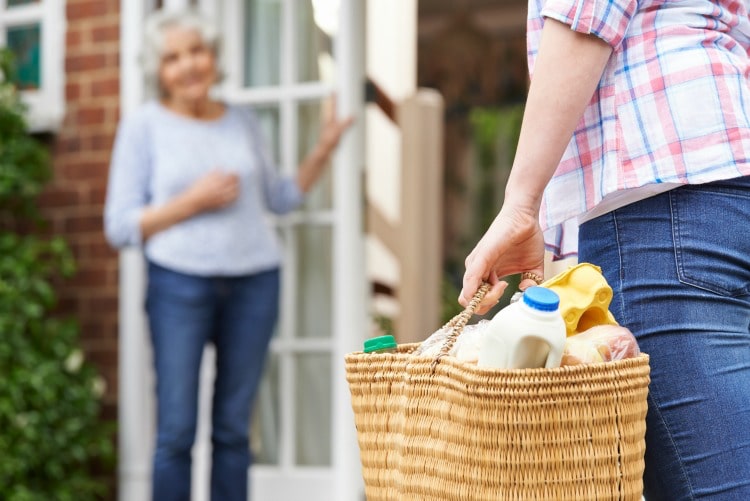
If you have elderly relatives, neighbors, or friends who are compromised by health issues and who need help with grocery shopping, consider reaching out to them the next time you are making a trip to the grocery store. I’m sure they are every bit as scared as I am.
Over the course of the many days that it took me to write this article, I had multiple people offer to shop for me. The first to reach out to me was my niece, Tiffany. In a phone conversation with her, I broke down, my voice cracking under the strain of holding back my tears. I told her about my anxiety and asked about her recent shopping experiences and thoughts. After our conversation, she sent me this lovely text message:
“I just want to tell you how sorry I am to hear you so upset. I can hear the fear in your voice and I can’t imagine what it might be like to go through all this with such an intense level of risk and feelings of vulnerability. Please let me help ease some of that for you. Let me help by going to the store for you; I can leave items at your garage door and you can sanitize them before bringing them in. It might give you a tiny peace in not having to go out and come home to Charlie. I love you both so much and I don’t know how else to help, but I can do this.”
Since her beautifully written text, several people have reached out to me: friends Barbara, Cathy and Kathy; neighbor Junior, and sister-in-law Michelle. I’m so blessed to have this “community” of people who have my back. I call that the best Backup Plan anyone can have.
As I wrap this up, a 4.6 earthquake just hit our area about 60 miles northeast of us, shaking us out of our comfort zone. The hits just keeping coming…
GENERAL GUIDELINES PER THE CDC
This is the link to the CDC’s guidelines for COVID-19. It includes information about how the coronavirus spreads, how to protect yourself, and how to clean and disinfect your home: CDC: Prevent Getting Sick.
This link is to the home page, which directs you to various areas of interest relevant to COVID-19: CDC: COVID-19.
Print this FREE printable for your refrigerator or household binder as an easy reference.
Stay safe,
RELATED POSTS FROM TOOT SWEET 4 TWO’S ARCHIVES:
42 Pantry Foods to Stock for Emergencies
Emergency Planning Checklist
6 Crucial Home Safety Tips for Your Family to Consider
Emergency Food Supply: Are You Ready?
Family Emergency Kit: Are You Ready?
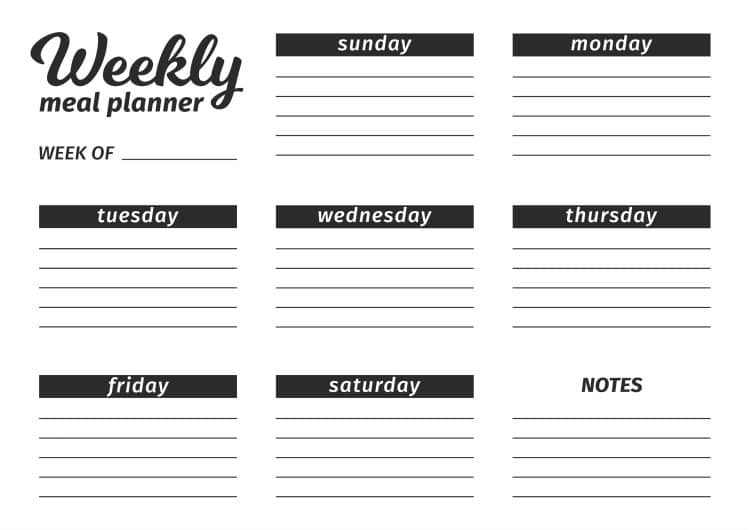
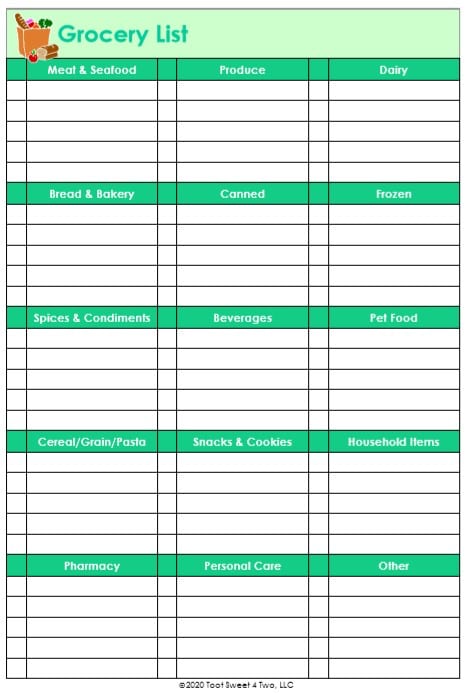
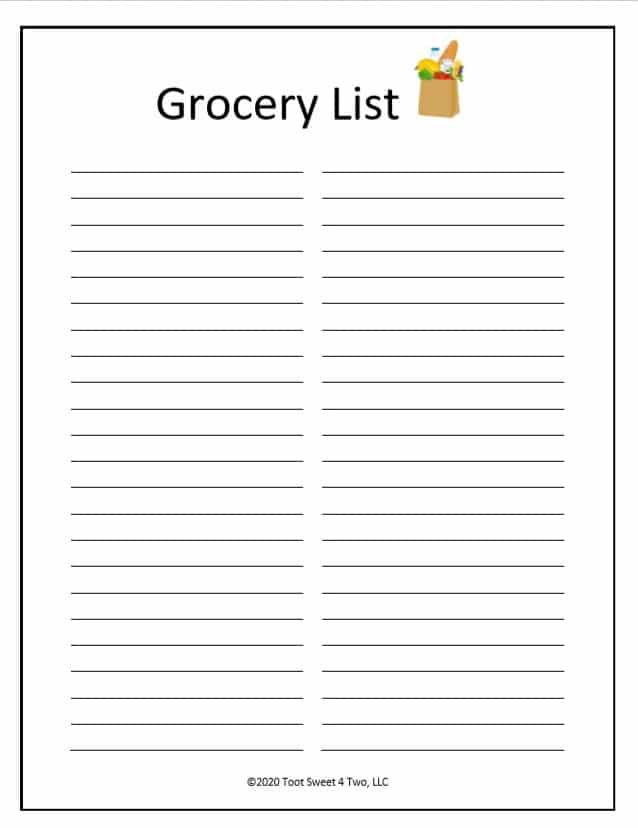
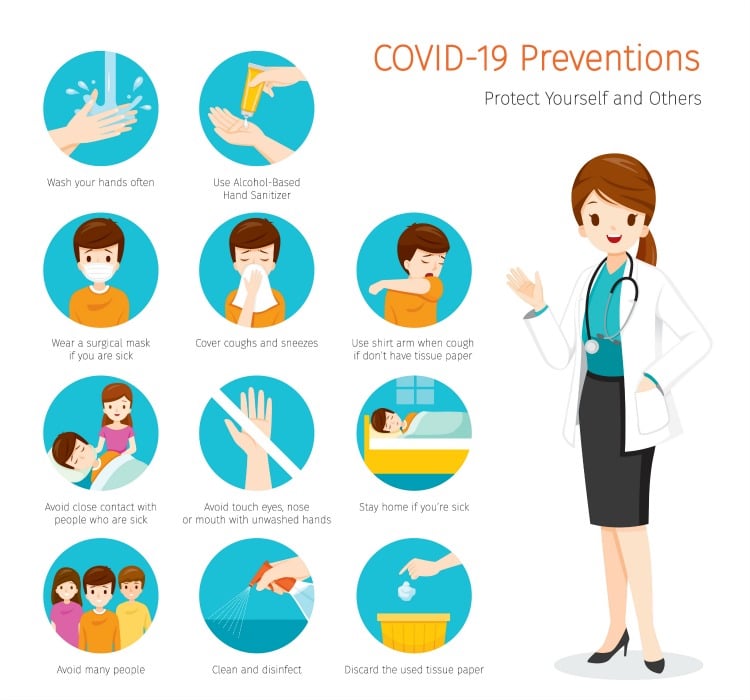
Leave a Reply